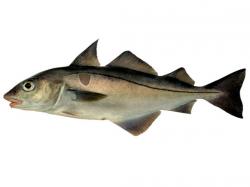Greenland Lands MSC Certificates For Barents Sea Cod, Haddock & Saithe Fisheries
May 15, 2015 | 2 min to read

The first Marine Stewardship Council (MSC) certified Greenland cod, haddock and saithe will soon be on their way to the UK after the fishery won the country's first MSC certificates for fin fish. This means it is recognized as a sustainable and well-managed fishery.
Sustainable fishing
80% of Greenland's 12,000 tonnes annual cod, haddock and saithe catch from the Barents Sea is sold in the UK almost all of it as fillets. The fish are targeted by three demersal trawler vessels – Sisimiut, Polar Princess and Ilivileq over four months of the year. These large, freezer trawlers are equipped with sorting grids to reduce catches of small fish and the fish are processed within hours on board.
The Northeast Atlantic cod stock is the largest cod stock in the world and the fishery’s MSC assessment reported the stock is currently in a very good condition. The fishery passed its assessment against the MSC environmental standard with high scores and only one condition placed on it for any of the species.
Gisli Gislason, MSC Manager for Greenland, Iceland and Faroes, said: “This is the second Greenlandic fishery to achieve MSC certification after the West Greenland prawn fishery. Both fisheries’ certificates are managed under the umbrella of Sustainable Fisheries Greenland, SFG, who are also working towards MSC certification on the nation’s lumpfish fishery. This demonstrates commitments from the Greenland fishery to sustainable fishing practices and the aspiration of the industry to deliver that message to the market.”
A sustainable partnership
The client group in this fishery are Royal Greenland, Polar Seafood Greenland, and Arctic Prime Fisheries. All Greenlandic certification efforts are coordinated through Sustainable Fisheries Greenland (SFG).
SFG Project Coordinator, Peder Munk Pedersen, commented on the certification: “Although several fisheries for these three species in the Barents Sea have already been certified, certain challenges occurred during the process. Now, however, we are ready to meet an increasing demand for certified products. The actors in the fishery have their chain of custody-certification in place so that the main outcome of this year’s fishery will hit the market blue-labeled.”
The reported catch of the fishery in 2013 was 12,075 tonnes, split into each species as follows:
- cod: 9,403 tonnes,
- haddock: 1,578 tonnes,
- saithe: 972 tonnes.
Source: The Marine Stewardship Council (MSC)
